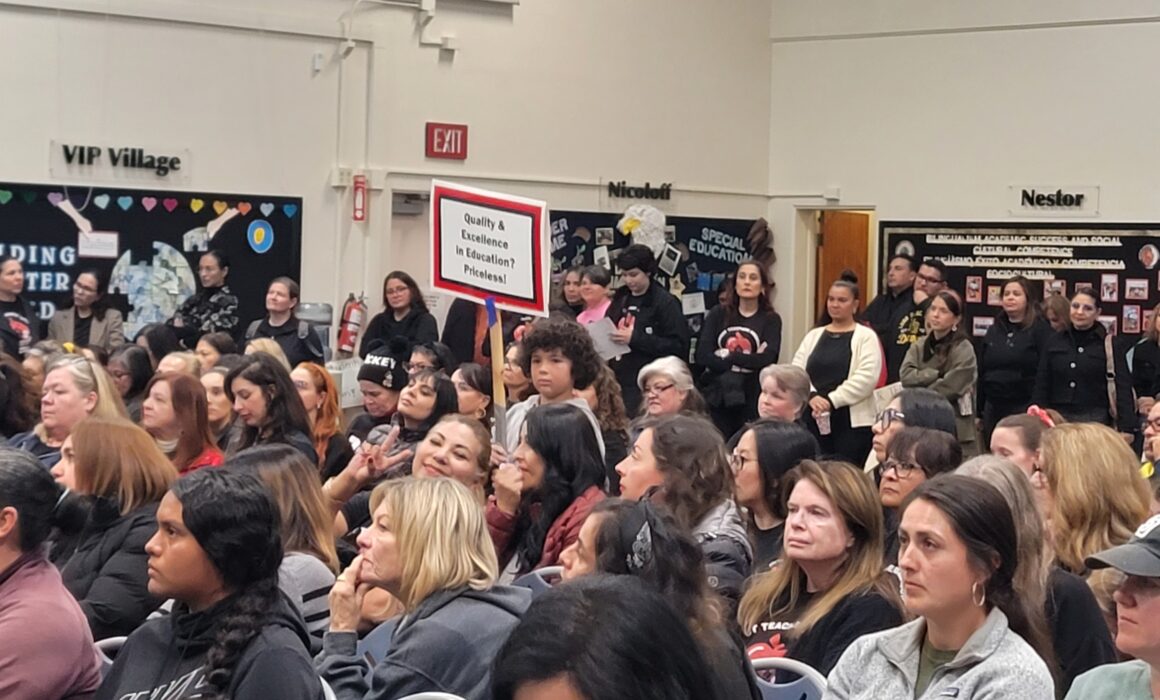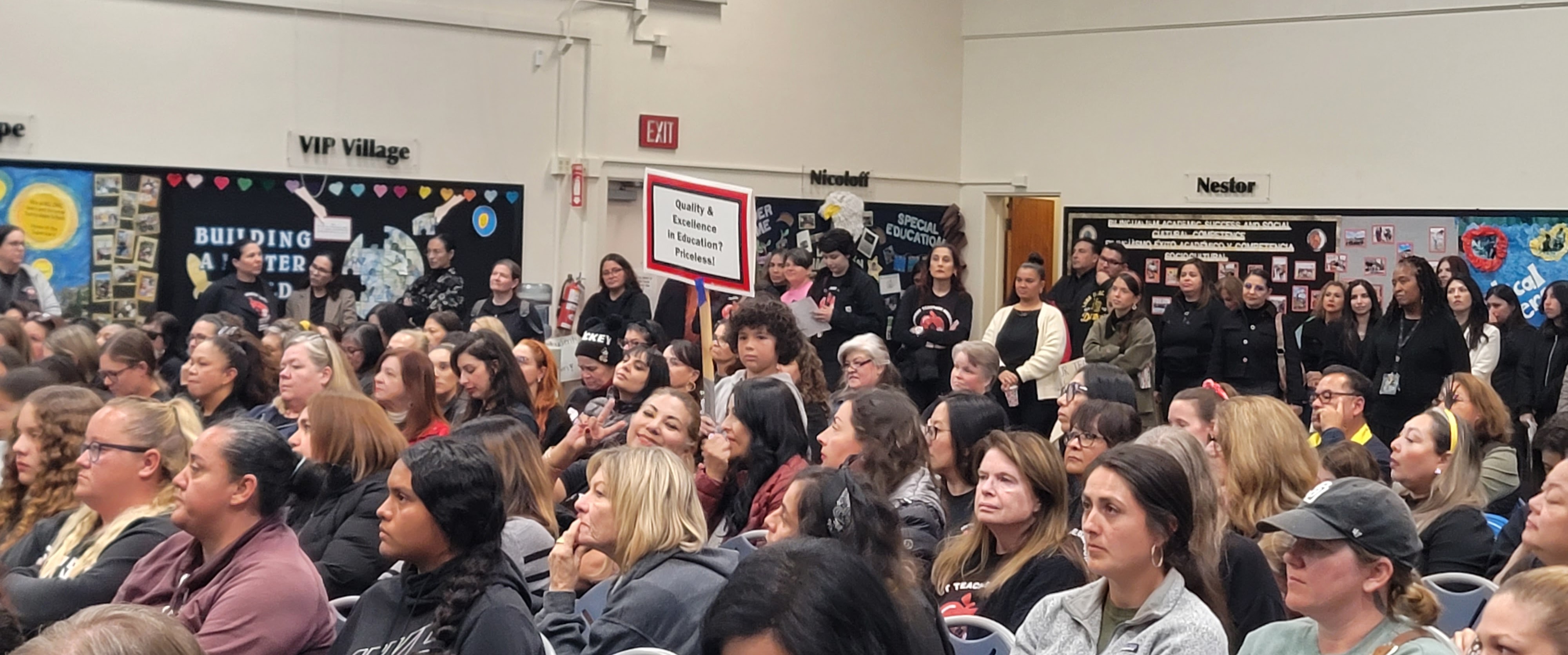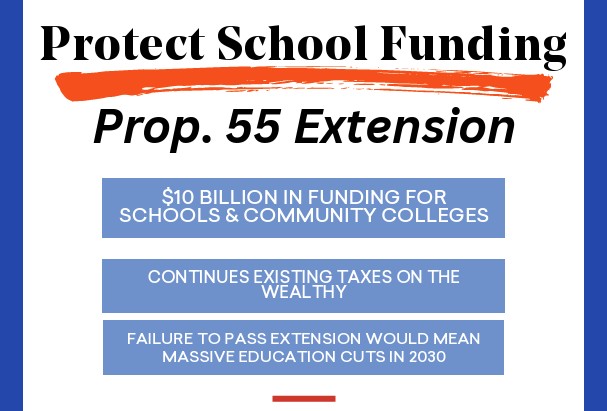
The promise of another fresh year and all the opportunity it entails makes Back to School a special time for students and educators alike.
While the Trump Administration continues to slash funding for public schools, health care and food for our most vulnerable, educators continue to organize and fight back against the cruel immigration raids that are terrorizing our communities and the funding cuts that are impacting our schools.
“Teachers in struggle are also teaching. With so much going on, it’s important to remain focused on our students and grounded in our
collective work to help them learn, grow and thrive.”—CTA President David Goldberg
“As educators, we see and feel the broader impact on our communities,” says CTA President David Goldberg. “When we start the new school year, how many empty desks will be in our classrooms? To know that a student has been separated from their family and sent to a detention center? Or are they too terrified to come to school? That’s not just heartbreaking — it’s enraging.”

Southwest Teachers Assn. Educators, with parents and community members crowd a district meeting about school closures earlier this year.
Our efforts to build the safe, stable public schools that all students deserve continue in this new Gilded Age, where an austerity mindset is choking off vital funding for schools and other public services to provide tax cuts for the richest people in our society. All year, educators have been stepping up from Los Angeles to Lake Tahoe to defend our students from Trump’s policies and ensure everyone feels safe, welcome and supported in our public schools.
“Teachers in struggle are also teaching,” Goldberg says. “With so much going on, it’s important to remain focused on our students and grounded in our collective work to help them learn, grow and thrive.”
School resumes this year with a lot of challenges and uncertainty, with federal funding cuts impacting our state budget and school districts’ ability to plan ahead confidently (see Page 30), as well as impacting our students and families who rely on services and programs that are being slashed or even eliminated.
Our union continues to fight in the halls of our State Capitol to win the public education funding our schools need, with members and staff visiting lawmakers over the summer to talk about the state budget and other important issues.
Other important items this school year include:
Keeping Schools Safe Spaces
Since the beginning of the year, educators have been organizing to defend students, families and communities who have immigrated to the United States. From visible shows of support and community rallies in Alhambra, San Francisco and Santa Maria to printing and distributing more than 350,000 Red Cards outlining basic rights when approached by an immigration agent, to showing up to defend our friends and neighbors from raids in places like hospitals and agricultural fields, union educators are leading with our values and organizing against the threats.
Our union continues to work with state leaders to protect our schools and other spaces from immigration enforcement and to curb the growing, unchecked power exercised by Immigration & Customs Enforcement (ICE) agents.
“When heavily armed federal agents — masked, militarized, dressed like extremist militias — target our communities, the trauma is real,” says Goldberg. “It impacts our students, their families and the educators who serve them.”
CTA Board of Directors member Maritza Ávila spent time this summer protesting at fields in Oxnard and Camarillo when ICE was raiding and abducting farmworkers. She says it’s important to speak out and take action for our communities and against hate.
“I didn’t grow up here, but I know what it’s like to belong to a place where people work hard and get pushed to the margins,” she said. “And I know this: No one should have to fear being taken for doing the work that feeds a nation.”
Fighting Against School Closures
Despite school reserves being at record highs and California now being the fourth largest economy in the world, many school districts chose to close schools last year, upending students and communities.
Last school year saw school boards vote to close neighborhood schools in Imperial Beach, Santa Rosa and multiple districts in San Jose. School districts considering closing schools must hold public meetings and processes before making any decisions. These meetings often begin early in the school year when educators are busy getting started with their classrooms.
Usually sparsely attended, crucial narratives start in these meetings that can be difficult to counter, so just being there and sharing what you see with colleagues and the school community can make a significant difference.
 “The way to fight school closures is with the community it directly impacts — on the closure level and the receiving level,” said Cassondra Curiel, president of United Educators of San Francisco, which successfully fought off school closures last year. “We need to be in solidarity with our students, families and communities who are under attack.”
“The way to fight school closures is with the community it directly impacts — on the closure level and the receiving level,” said Cassondra Curiel, president of United Educators of San Francisco, which successfully fought off school closures last year. “We need to be in solidarity with our students, families and communities who are under attack.”
Some tips from members who went through closure processes last school year:
- Attend school closure meetings when you can, be present in the process, ask questions and share what you learn to keep people informed at your school site
- Be the eyes and ears for your school community. Overcommunicate about school closures with parents and families. Shine a light — schools close in darkness.
- Bring colleagues with you to organized actions with your local union.
- Don’t accept the district’s data or rationale at face value. Ask questions in public spaces about their assertions on the need to close schools. School closures hurt students and devastate communities — make the district show why it wants to resort to such drastic measures.
Working for Stable Public Ed Funding
Our union’s fight continues for the stable funding our public schools and community colleges need and all students deserve — at local districts, in Sacramento and at the ballot box. This means tracking our school district budget processes and organizing to ensure that school boards are making the best decisions for our students and communities; sharing our stories with state legislators and asking them to support public education with their votes; and working to extend vital Proposition 55 funding that our schools and students rely on.
Keep an eye out for Prop. 55 petitions circulating to qualify a ballot initiative to extend $9 billion in crucial funding for California public schools. These funds come from a 2012 voter-approved tax (extended in 2016) on the wealthiest Californians (currently, couples making more than $700,000 a year). Without an extension, these funds will expire in 2030, which would cause an immediate 15% hole in the state public education budget.
This would result in massive cuts in schools and community colleges statewide, with an estimated one in six educators facing potential layoffs. That’s why extending this tax is so important, and why locals across the state are already sharing information about the issue and organizing to collect signatures.
“To ensure and secure the education of future generations, it’s important that we maintain Prop. 55 funding,” says Trina Gonzales- Alesi, president of Desert Sands Teachers Association (DSTA).
“We’re actively educating our members on the benefits and we plan to start a signature gathering campaign in the fall.”
Organizing Continues for Local After Strike Win

Daniella Lefer and Jennifer Montalvo were LLEA co-presidents during the strike; Lefer continues to serve.
One of our most compelling victories of last school year was Las Lomitas Education Assn.’s inspiring strike for fair compensation in the richest ZIP Code in the country. We caught up with LLEA Co-President Daniella Lefer to talk about what’s happened since the strike and what’s next for LLEA.
How was the working environment after the strike?
“Some administrators became more cautious or guarded in their communication. Others seemed more collaborative, at least outwardly. But across the board, the dynamic changed. We’re being more intentional about holding leadership accountable, while also pushing for transparency and respect in day-to-day interactions. There was a feeling that management took us seriously (once the superintendent left) and was interested in our input.”
What are your plans for the coming school year?
“We’re back at negotiations, building on our momentum, with a full contract opening. Member engagement is a top priority, through organizing committees, stronger site rep networks and ongoing training with CTA. We’ll be closely monitoring contract enforcement and pushing for better support in special education, watching carefully how management continues to reprioritize the budget in a way that is student-centered and protecting positions and programs. We will prepare early for the next bargaining cycle, this time with a much more activated membership.
“None of this is possible without the dedication and support of our CTA leadership, who has guided us every step of the way!”
The Discussion 0 comments Post a Comment